|
 18 November 2006 |
|
 11 November 2006 |
|
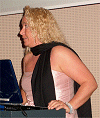 4 November 2006 |
|
 28 October 2006 |
|
 21 October 2006 |
|
At the Bottom of the World, Robert Melville has activated his ARGUS equipment at Admussen-Scott South Pole Station. This station gives The SETI League, for the first time, full seven continent coverage. Bob does not have to worry about providing cryogenic cooling for his low noise preamplifier!
WB3EFT photo |
 14 October 2006 |
|
The newest version (Release 4 BETA) of the Google Earth mapping and imaging program provides free, high-resolution satellite and aerial images of any point on Earth. Seen here is the Arecibo Radio Observatory in Puerto Rico, with the feed assembly, support towers and cables, and even the shadow of the feeds clearly visible from space.
Google Earth image |
 7 October 2006 |
|
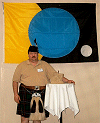 30 September 2006 |
|
At the recent Fourth European Radio Astronomy Congress in Heidelberg, Germany, ERAC president Peter Wright, DJ0BI, inducted SETI League Executive Director Emeritus H. Paul Shuch (left) as a Fellow of the European Radio Astronomy Club. See this Press Release.
ERAC photo |
 23 September 2006 |
|
Iban Cardona is getting double duty out of his 3 meter Project Argus dish in Spain, by receiving X-band interplanetary space probes. Here you can see an 8.3 GHz feedhorn and downconverter just in front of his olive-can L-band feed.
EB3FRN photo |
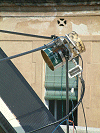 16 September 2006 |
|
In Michigan, member Jim Van Prooyen, N8PQK, is working on the design of a portable 21 foot diameter dish. Pictured from left to right are Tyler Van Prooyen, Jim Van Prooyen, William Van Prooyen, and Rich Nagel. The feed antenna was built by Bruce Randall, WD4JQV. This dish will be used for pulsar work in the 406 MHz band. The basic design goal is a big antenna that can be takeen to schools, parks, and star parties, to show what can be done with radio astronomy.
N8PQK photo |
 9 September 2006 |
|
 2 September 2006 |
|
 26 August 2006 |
|
In Sweden, the 10 foot diameter dish at Project Argus station JO89sn has been operational all summer. (Featured Photos for recent weeks showed it under construction.) The dish feed now contains dual probes, and dual LNAs allow for both hydrogen and hydroxyl line reception. You can see a block diagram of Greg's entire station here.
Greg Gimseus photo |
 19 August 2006 |
 |
More images of the 3 meter dish recently installed in Sweden, at Project ARGUS station JO89sn. Greg says of his dish mount, "I do hope it will hold. It's about 1' diameter and 2' deep. In the bottom I weldeded a large + that I drove into the ground, to stop it from turning. The ground here is an old lake bottom. Only a few inches at the top is soil, down under we have clay, tough - hard - blue clay, almost as tough as cement itself. The dish is also in the cover of the house, so I think it'll hold. The dish is so light that one person can lift it; the mount weighs a bit more."
Greg Gimseus photos |
 12 August 2006 |
|
Members H. Paul Shuch and Muriel Hykes relaxing at a 4th of July party. last month at the home of SETI League president Richard Factor. Note the bottle in Muriel's left hand, the beverage of choice of serious SETI scientists.
WA2IKL photo |
 5 August 2006 |
 |
In Sweden, the 6 foot diameter dish at Project Argus station JO89sn is getting a big brother. Greg writes, "It doesn't sound like such a big difference, but standing next to each other, the 10 footer is a monster. I'm getting eager for the first drift scan of Cygnus to compare results."
Greg Gimseus photos |
 29 July 2006 |
|
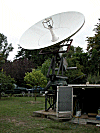
22 July 2006 |
|

15 July 2006 |
|

8 July 2006 |
|
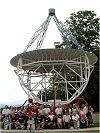
1 July 2006 |
|
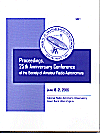
24 June 2006 |
|

17 June 2006 |
|
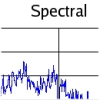 10 June 2006 |
 |
The Project Argus station of US North Central regional coordinator Don Lallier was undergoing initial testing and setup in mid April, 2006. Note his dish in bird-bath mode, solidly mounted close to the ground to survive high winds (which are ever present in Grid Square EN02vi). Don writes, "if the weather had not been so cold this winter in Nebraska, I would have had my station up a long time ago."
N0HWJ photos |
 3 June 2006 |
|
 27 May 2006 |
|
 20 May 2006 |
|
 13 May 2006 |
|
 6 May 2006 |
|
 29 April 2006 |
|
22 April 2006 |
|
 15 April 2006 |
|
 8 April 2006 |
|
 1 April 2006 |
|
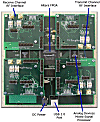 25 March 2006 |
|
  18 March 2006 |
|
 11 March 2006 |
|
 4 March 2006 |
|
 25 February 2006 |
|
 18 February 2006 |

|
|
 11 February 2006 |
|
 4 February 2006 |
|
  28 January 2006 |
|

21 January 2006 |
|

14 January 2006 |
|

7 January 2006 |
Click here for lots more pictures.
email the Webmaster | entire website copyright © The SETI League, Inc.; Maintained by Microcomm this page last updated 30 December 2006 |
Top of Page |
 SETI League Photo Gallery
SETI League Photo Gallery




